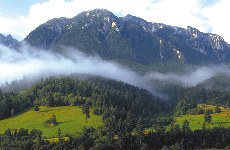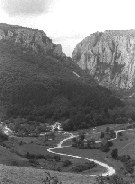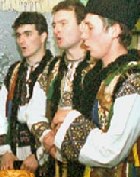The Carpathians arch majestically across Central and Eastern Europe (CEE) from Austria to Romania, crossing eight national borders, as well as the future boundary of the EU. They are Europe's largest mountain chain, home to remarkable wildlife and a multitude of peoples. The magnificence of the region lies not only in its immense wildlife value but also in the rich and colourful cultural heritage.
 |
| Photo: B and C Promberger |
The Carpathian region is one of the last places in Europe where you can still hear the eerie howl of the wolf, track lynx or see bears on their daily forage for food; they are the last European stronghold of the kings of the forest.
A remarkable one-third of Europe's plant species and over a third of Europe's carnivores live in this wildlife haven, along with bison, chamois, golden eagles, capercaillie and eagle owls, to name but a few. Many of these stunning species are only found in the Carpathian region.
 |
| Photo: Karin Steinbrueck |
The region contains the largest surviving part of the original primeval forest that once covered most of Europe. The mountains form the last bridge between Europe's forests to the north, south and west—a vital corridor for the dispersal of plants and animals throughout the continent: wolves are actively repopulating southern parts of Europe through the Carpathians.
Freshwater from the mountains feeds the region's major rivers, the Danube and Vistula, through to the Black Sea and the Baltic. Without rainfall from the Carpathians, more than 80% of Romania's water supply and 40% of Ukraine's would dry up (excluding the Danube).
 |
| Photo: Karin Steinbrueck |
Throughout the centuries, this region has been a melting-pot for different tribes, ethnic groups and nations—Vallachians, Ruthenians, Lemkos, Boykos, Bohemians, Austrians, Hungarians, Slovaks, Czechs, Poles, Romanians and Ukrainians. Today, as in the past, nature, culture and a shared history bind the peoples together.
 |
| Photo: David McCairly |
Despite the separation of national boundaries, the Carpathian peoples are united by a cultural heritage, born from sharing the same hardships of mountain life. Whether it be the wonderful Carpathian music and dance; harvest festivals, sheep's cheese and plum brandy; or beautiful wooden architecture, folklore and costume, these rich traditions still survive.
Suzie Holt, 23 April 2001
Photos courtesy of
Karin Steinbrueck and David McCairly
Moving on:








